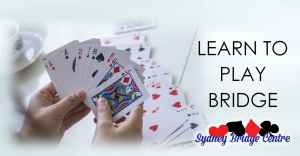City and Canada Bay – Monday Morning 21st October 2024.

I am writing this on a plane to South America where I will be away until 14 November. I will try and do a column next Monday but no guarantees! There will then be a gap at the beginning of November. After I return, this column will switch to looking at a hand from the Thursday SBC sessions (which will be using the same boards in the City and in Canada Bay in the same way as Monday currently does). The first Thursday column will therefore be for the 14 November session.
I have often talked about the value of splinters as a bridge bid. Last week board 11 was a great example which could help North South reach a good slam.
Neither West nor East have anything to bid so the auction is likely to be uncontested North South. Usually South will open 1♠ but see advanced section for some more thoughts). North will most likely raise to 2♠. Yes he is maximum for that bid (usually being about 5-9 with 3 card support) but that’s allowed! There’s no need for both partners to stretch – see advanced for more.
South, on hearing the raise, now has a massive hand and can make the key bid in the auction – a jump to 4♣. A splinter bid confirming spades are trumps and showing shortage in clubs (singleton or void). For those that like to play 4♣ as Gerber ace ask – this is a great example of why you shouldn’t! Holding a void, finding out about aces isn’t useful to South – suppose partner shows one. But which one? The ♣A could be useless, the ♥A fits with the ♥K and could be gold dust. He is far better proceeding via cue bidding to try and find out which ace(s) partner has. Blackwood or Gerber are useful when all you want to know is HOW MANY key cards partner has but not when you want to know WHERE they are.
4♣ is almost always far better used for something other than ace ask – here as a splinter, sometimes as a cue bid, sometimes simply to set clubs as trumps ready to hopefully reach 6♣. So why is it a splinter here and not one of the other meanings? Because it’s a jump. Holding a cue bid or a natural club suit South could bid 3♣ (see advanced section for the concept of an “advance cue bid”).
The power of 4♣ as a splinter becomes clear when we switch back to North’s perspective. 4♣ should be music to his ears! He only has ♣J opposite the shortage. That means all his red suit honours are likely to fit with honours partner has in those suits (South should only splinter if he has a very good hand that has slam interest. If he is only interested in game then he should just bid 4♠ why bother to advertise your club shortage to the defenders?) So North should follow with a 4♥ cue bid. This time that should be music to South’s ears – 4♥ has to be ♥A which means it fits beautifully with his ♥K. At this point South should be pretty confident of 6♠ and 7♠ is not impossible (give partner ♥AQ and♦Q which is 8 points and perfectly possible for a 2♠ raise).
It’s not so clear how South is best continuing now. The two red queens have become the key cards he wants to find out about but it’s very hard to do that (even if you now ace ask, continuations usually look for side suit kings and South already has those). A pair would need some quite advanced bidding methods to reach 7♠ when it was right here. There are, however, methods that look for 3rd round control in a suit which could help.
However, a practical shot might well be to simply now bid 6♠. As can be seen from the results here, that would still be a great result. Only 1 pair at Canada Bay and 3 pairs at the City bid slam – well done.
There’s not much to the play on this hand. Notice how well the hands fit – something the pairs bidding the slam via a splinter should already know. South ruffs the likely ♣K lead, tries 2 round of trumps (which draws them all here but otherwise he should leave one out while he plays♦Q, ♦A and ruffs his losing diamond). So it just comes down to hearts whether declarer makes 6 or 7. The odds are to take the finesse but a couple of unfortunate Wests chose to lead a heart which picked up his partner’s Queen giving declarer 13 tricks.
Key points to note
Splinters (normally unusual jumps) are a really valuable bidding tool to help partner value his hand better.
If partner shows shortage in a suit you have very little in then that’s really good news. So holdings like Axxx or xxxx in that suit are great but KJxx would be pretty useless.
Asking bids like Blackwood or Gerber can be useful if you just want to know how many key cards partner has – but far more often you need to know WHERE they are as well (in which case cue bidding is better).
Instead of Gerber, 4♣ is almost always better played as a cue, a splinter, or a way to agree clubs.
Hands with very few losers may be worth opening as a game force – imagine 4333 rubbish opposite and think if you would still want to play game? If so then you may not want to risk your 1 level opening being passed out.
Discussing your bidding style with partner is just as important as the conventions you play. The more experienced you are the more this is relevant.
An “advance cue bid” is a bid made as a cue but which is known to initially mean something else (often a trial bid). Later it is revealed to be a cue after partner’s response.
More advanced
South has 19 points and many will open 1♠. But let’s look a bit further. How many losers does South have? 3 – 2 in hearts and 1 in diamonds. So if there is a spade fit there’s a good chance of making game. Imagine partner with a 3334 shape and no points. How good is 4♠ opposite that? Not bad at all! The only problem would be what to do with South’s 4th diamond – but even opposite nothing it could be a winner if the suit is 4333, or it could be ruffed in dummy. Either way there is a fair chance of game when partner has a hand that he is never going to respond on. That points to perhaps South opening a game force instead of risking 1♠ being passed out?
I mentioned there’s no need for both partners to stretch in the bidding. That usually leads to pairs getting too high too often. This is a matter of style that, among experienced players, is actually a far more important part of system discussion than the literal conventions you play. Yet I find it doesn’t often get much attention.
One style you do hear discussed a fair bit is pre-emptying style. How aggressive are you? Do you open weak twos with 5 card suits? Does it vary by seat or vulnerability (it should!)? That heavily influences how partner should respond to your pre-empts.
But another example of style is inviting. Does the pair tend to make aggressive invites towards game (in which case partner should only accept with a maximum rather than just a non-minimum)? Or do they make “middle of the road” invites (in which case partner accepts in roughly the top half of their range). Either can work fine – but you want both partners to be on the same wavelength!
A third example is protecting – does the pair go out of their way to keep an auction open (in which case responding to your partner’s protective bid should allow for partner being a fair bit weaker than normal)?
I mentioned advance cue bids. While they are a more advanced concept that’s not where the name comes from! It’s because you make a cue bid earlier in the auction than partner initially realises – i.e. in advance.
The key point is at the time you make the bid you mean it as a cue but you know partner will, at that stage, interpret it as something else. When you LATER continue, it reveals to partner what you were doing. Here, for example, if South didn’t splinter with 4♣ over 2♠ he might have bid 3♦. At the time he bids that, it usually means some sort of trial bid looking for game in spades so North will respond to that (here he should accept and bid 4♠ – he is maximum for his 2♠ and his ♦Q looks like it will be useful). But now when South continues it reveals his hand was strong all along (if all he wanted over 3♦ was partner to bid 3♠ or 4♠ based on his trial bid then he’s already heard the answer and has no reason to do anything else). Hence when South moves again NOW North can work out that 3♦ was in fact an “advance cue bid”. Sometimes that lets North completely reevaluate his hand – here it doesn’t make much difference because, in this auction, he is still worried about club losers. It’s why over 2♠ I think on this hand 4♣ is a better bid for South than 3♦. But advance cues can be a good way to bid a hand although they do require some planning ahead and working out what you are trying to find out.
Julian Foster (many times NSW representative) ♣♦♥♠



